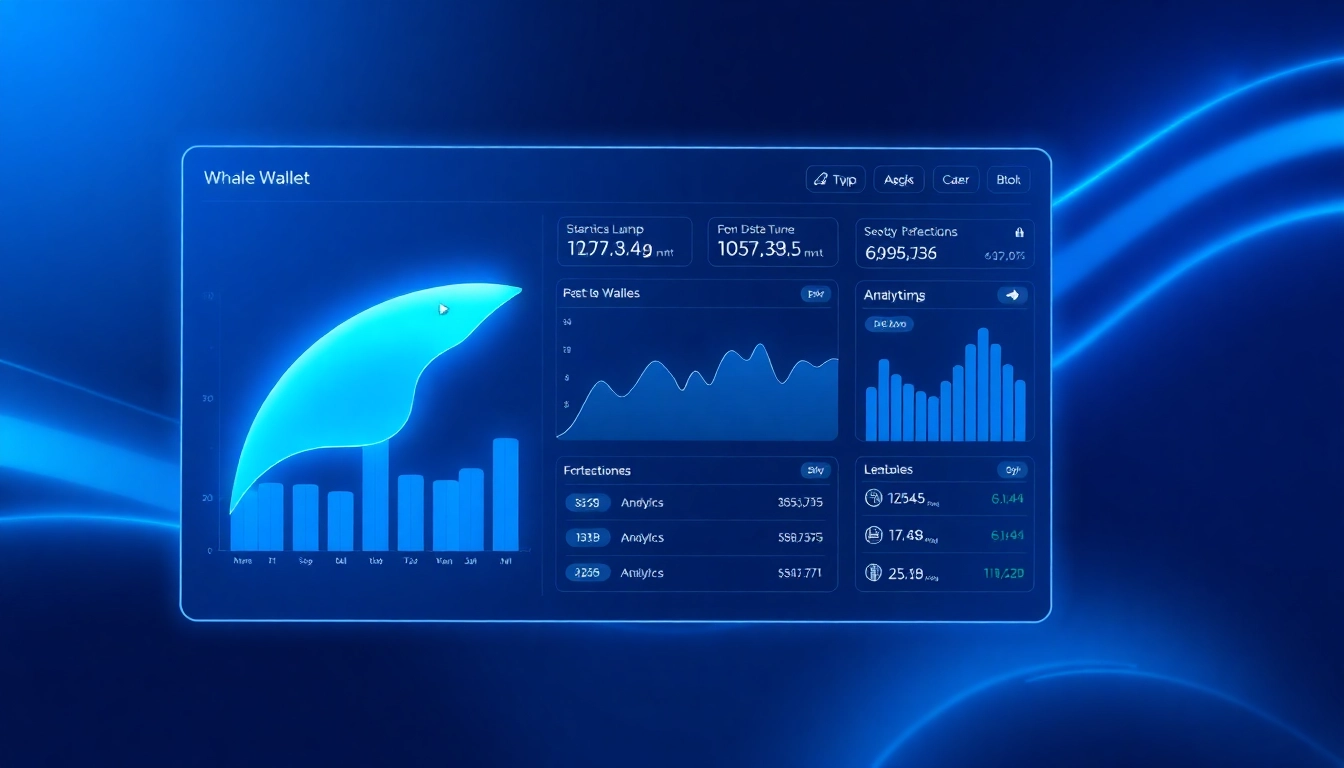
Understanding Wallet Tracking: The Basics
As cryptocurrency continues to dominate financial discussions, tools that enhance understanding and management of digital assets are becoming increasingly essential. One such tool is a whale wallet tracker, which enables crypto investors to monitor large movements in wallets owned by influential entities. The implications of tracking these “whale” movements can be profound, impacting trading strategies and market insights.
What is a Whale Wallet Tracker?
A whale wallet tracker is a specialized tool that allows users to identify and monitor large-scale cryptocurrency transactions conducted by significant holders or “whales.” Whales are typically individuals or institutions that possess vast amounts of cryptocurrency, and their activity can heavily influence market trends and asset prices. By utilizing a tracker, users can stay informed about key market movements, potentially capitalizing on the trends created by these influential players.
The Importance of Tracking Wallets
Tracking wallets is vital for several reasons:
- Market Insights: Understanding where large investments are being made can provide insight into market trends.
- Risk Management: Identifying whale activity can help in predicting possible market corrections or crashes.
- Strategic Planning: Investors can adjust their portfolios in response to changes in whale holdings or movements.
Key Features of Effective Tracking Tools
When considering a whale wallet tracker, it is essential to look for several key features:
- User-Friendly Interface: A simple and intuitive design will allow users to focus on data without being overwhelmed by unnecessary information.
- Real-Time Notifications: Alerts about significant wallet transactions are crucial for timely responses to market changes.
- Comprehensive Data Analysis: Advanced analytics should be included to help users understand the implications of wallet movements.
Setting Up Your Whale Wallet Tracker
Choosing the Right Tracker
The initial step in leveraging a whale wallet tracker is selecting the most suitable tool for your needs. It’s essential to consider factors such as:
- Reputation: Look for tools that have good reviews and a solid track record within the crypto community.
- Features: Evaluate what features are most important for you, such as multi-wallet tracking, transaction history, and wallet analytics.
- Cost: Many tools offer free versions, but premium features may require a subscription. Balance your budget with necessary functionalities.
Installation and Configuration Steps
Once you’ve chosen your tracker, follow these typical steps to install and configure it:
- Download or Access: If it’s a web-based application, simply go to the website. For desktop applications, download and install the software.
- Create an Account: Register for an account, providing necessary information as required by the tool.
- Connect Your Wallets: Input the wallet addresses you want to monitor, ensuring you follow the tool’s guidelines for wallet integration.
- Configure Notifications: Set up your preference for receiving alerts based on transaction activity.
Integrating with Your Crypto Portfolio
Integration is critical for maximizing the value of your tracking tool:
- Unified Dashboard: Many wallet trackers allow you to integrate various wallets for a consolidated view, making it easier to view asset performances.
- Linking Accounts: Connect your tracker to portfolio management tools for comprehensive analysis.
- Regular Updates: Ensure that the data connected to your wallet tracker is up-to-date to reflect the latest movements.
Common Challenges in Wallet Tracking
Managing Multiple Wallets
As investors may own different wallets, managing them can become complex:
- Integration Challenges: Not all wallet trackers support multiple wallet formats or types, making compatibility an issue.
- Data Overload: Too much data from various wallets can lead to confusion. Organizing and filtering information is key.
Data Accuracy and Reliability Issues
Accuracy in tracking is critical to making informed decisions. Here are common pitfalls:
- Delayed Data: Some trackers may not offer real-time data, affecting responsiveness. Always verify the latency of data updates.
- Incomplete Tracking: Relying solely on one tool might omit some critical movements. Cross-reference data with other sources.
Security Considerations for Wallet Tracking
Security is an ongoing concern in the crypto space:
- Private Key Safeguarding: Never share your wallet’s private keys with any tracker or third-party tools.
- Secure Connections: Use trackers that implement strong security protocols, such as encryption and two-factor authentication.
Advanced Techniques for Leveraging Whale Wallet Data
Analyzing Transaction Patterns
Understanding how whales behave can reveal patterns:
- Movement Trends: Observing whether whales are increasing or decreasing their holdings can indicate market sentiment.
- Buying Pressure: Detecting large buy orders might signal bullish trends that could affect smaller investors.
Using Whale Data for Investment Decisions
Whale transactions can serve as valuable indicators:
- Timing Market Entry: Being aware of whale purchases may guide timing for your own investments.
- Portfolio Diversification: If a whale diversifies their holdings, it could be a signal to explore those assets.
Predictive Analytics in Wallet Tracking
Leveraging whale wallet data for predictive analytics can yield significant insights:
- Data Modeling: Using historical data of whale movements, predictive models can suggest future price movements.
- Risk Assessment: Advanced analytics can evaluate potential risks based on observed whale behavior.
Measuring the Impact of Your Tracking Efforts
Key Performance Indicators (KPIs) for Wallet Trackers
To assess the effectiveness of your wallet tracking, consider these KPIs:
- Transaction Frequency: Track how often large transactions occur and their impact on your portfolio.
- Alert Response Time: Measure how quickly you act on notifications and the results of those actions.
- Return on Investment (ROI): Evaluate the monetary gains based on insights gained through tracking.
Tools for Performance Measurement
Several tools can assist in measuring your tracking success:
- Analytics Dashboards: Many wallet trackers come with built-in analytics to visualize data trends.
- Portfolio Management Tools: Integrate your tracking results with portfolio management software for greater insights.
Improving Your Tracking Strategy Over Time
Continuous improvement in your tracking strategy is necessary for long-term success:
- Regular Reviews: Frequently assess the effectiveness of your tracker and adjust settings or strategies accordingly.
- Feedback Incorporation: Use feedback from your trading outcomes to refine your approach to whale tracking.